Understanding Normal Intraocular Eye Pressure and Its Significance
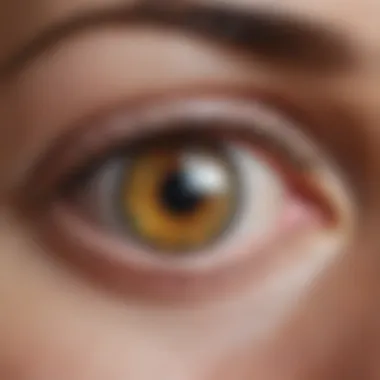
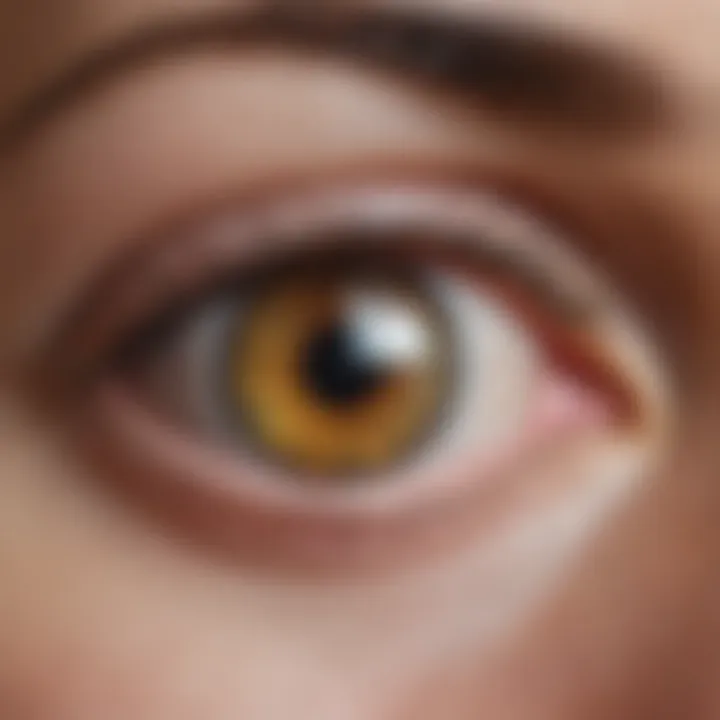
Intro
Normal intraocular pressure (IOP) is a vital component of ocular health. Maintaining an appropriate level of IOP is crucial for preventing various eye diseases, particularly glaucoma. Understanding the factors that contribute to normal IOP, its measurement, and the impact of abnormal levels can empower healthcare professionals and patients alike.
Research Overview
Methodological Approaches
Research into IOP relies on several methodological approaches. Clinical studies often leverage tonometry, a procedure that measures the pressure within the eye. Applanation tonometry is frequently employed in clinical settings due to its accuracy. Optical coherence tomography (OCT) also plays a role in assessing the health of the optic nerve, which is closely related to IOP levels.
Statistical analysis and modeling are essential for interpreting IOP data collected from diverse populations. Researchers analyze demographic and clinical variables to understand how they influence IOP. Longitudinal studies can provide insights into how IOP changes over time and its implications for eye health.
Significance and Implications
The significance of normal IOP cannot be overstated. Elevated or decreased IOP levels can lead to severe ocular conditions, including glaucoma, which may result in irreversible vision loss. Knowledge of normal IOP helps identify risk factors for developing glaucomatous changes and aids in the early detection of at-risk individuals. Therefore, understanding IOP regulation and its implications is paramount for both eye care providers and the general public.
"Recognizing the intricacies of intraocular pressure regulation is essential in the fight against ocular diseases."
Current Trends in Science
Innovative Techniques and Tools
Recent advancements in technology have introduced innovative methods for measuring IOP. Devices like the iCare home tonometer allow for self-measurement of IOP in patients, promoting proactive monitoring. Emerging imaging techniques, such as ultra-high-resolution OCT, offer deeper insights into ocular structures, complementing IOP measurements and enhancing overall eye health assessment.
Interdisciplinary Connections
Research on IOP weaves through various disciplines, including pharmacology and environmental science. New pharmacological agents targeting IOP regulation are on the horizon, exploring both systemic and topical therapies. Furthermore, understanding how environmental factors such as climate and altitude affect IOP may illuminate new risk factors for ocular disease. Interdisciplinary collaboration among researchers, healthcare providers, and public health officials is vital in addressing the global burden of eye disease related to abnormal IOP levels.
Preface to Intraocular Eye Pressure
Understanding intraocular eye pressure (IOP) is vital for maintaining ocular health. Normal IOP plays a key role in how the eye functions. Abnormal levels can lead to significant health issues, including glaucoma, which can result in vision loss. This highlights the need for monitoring and understanding IOP effectively.
Defining Intraocular Pressure
Intraocular pressure refers to the fluid pressure within the eye. It is largely determined by the balance between the production and drainage of aqueous humor, the clear fluid in the front part of the eye. Aqueous humor is produced by the ciliary body and flows through the anterior chamber, which then drains through the trabecular meshwork into Schlemm’s canal. Normal ranges for IOP are typically considered to be between 10 to 21 mmHg, although individual variations are possible.
Importance of Normal IOP
Normal IOP is crucial for several reasons:
- Structural Integrity: Maintaining appropriate pressure helps the eye retain its shape and prevents damage to internal structures.
- Visual Function: Correct IOP contributes to the optical clarity of the eye, influencing how we perceive images essentially.
- Disease Prevention: Abnormally high IOP can be a significant risk factor for glaucoma. Early detection and management of IOP can lead to better outcomes and prevent further complications.
"Monitoring intraocular pressure is essential to the preservation of vision and overall ocular health."
In summary, the importance of IOP cannot be overstated. With proper awareness and understanding, individuals can take necessary steps to safeguard their eye health.
Physiological Mechanisms of IOP Regulation
Intraocular pressure (IOP) is largely regulated by the production and drainage of aqueous humor. Understanding these physiological mechanisms is crucial for grasping how IOP remains within normal limits. Imbalances in these mechanisms can lead to elevated or reduced IOP, which is often associated with various ocular diseases, notably glaucoma. In this section, we will explore key aspects such as aqueous humor production, drainage pathways, and the role of the trabecular meshwork in maintaining normal IOP.
Aqueous Humor Production
Aqueous humor is produced primarily by the ciliary body, a structure located behind the iris. This fluid is crucial for both nourishing the avascular structures of the eye and maintaining IOP. The production occurs through a process called ultrafiltration, filtration, and diffusion. Factors influencing aqueous humor production include:
- Metabolic activity: Higher metabolic activity increases production.
- Blood flow: Enhanced blood flow to the ciliary body can also ramp up aqueous humor synthesis.
- Ciliary processes: These structures play a vital role in the secretion of aqueous humor.
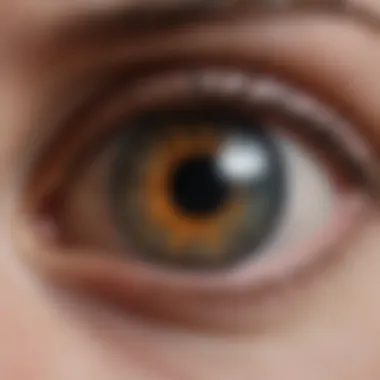
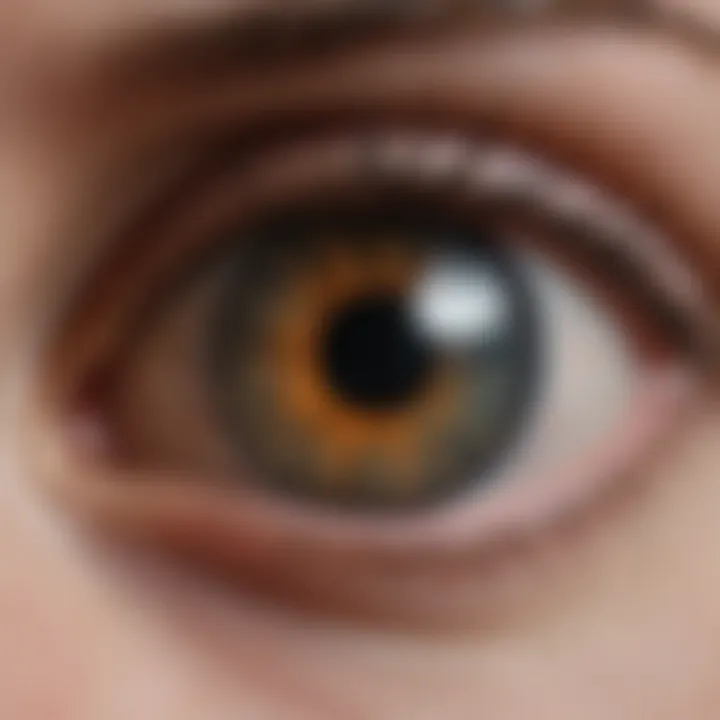
The rate of production varies with time of day, often peaking during daylight hours, which suggests a biological rhythm in the eye’s physiology.
Aqueous Humor Drainage Pathways
Once produced, aqueous humor must exit the eye to keep IOP in check. There are chiefly two drainage pathways: the trabecular route and the uveoscleral route. The trabecular pathway accounts for a significant portion of the drainage process and involves the trabecular meshwork and Schlemm's canal.
- Trabecular pathway: Fluid flows through the trabecular meshwork and enters Schlemm's canal, eventually draining into the venous circulation.
- Uveoscleral pathway: A lesser-known route where aqueous humor drains between layers of the ciliary body and into the sclera's tissue.
Both pathways are vital for regulating IOP, and any obstruction or dysfunction in these routes can lead to abnormal pressure levels.
Role of Trabecular Meshwork
The trabecular meshwork serves as a crucial anatomical and functional component in IOP regulation. It acts as a filter through which aqueous humor must pass before entering Schlemm's canal. This meshwork's compliance and structure determine outflow resistance, thereby impacting IOP.
- Cellular composition: The meshwork consists of specific cells that can change in response to various stimuli.
- Disease association: Changes in the trabecular meshwork can lead to elevated IOP, making its role critical in glaucoma pathology.
Maintenance of normal function of the trabecular meshwork is essential in preventing excessive IOP increase.
"Understanding the interplay between production and drainage mechanisms for aqueous humor is paramount for all healthcare professionals involved in managing ocular health."
Measuring Intraocular Pressure
Measuring intraocular pressure (IOP) is a fundamental aspect of eye health assessment. Monitoring IOP is essential for the early detection of glaucoma, a condition that can lead to irreversible vision loss if left untreated. Understanding how IOP is measured helps to appreciate the nuances of ocular health and the importance of regular eye examinations.
Goldmann Applanation Tonometry
Goldmann applanation tonometry is considered the gold standard in IOP measurement. This method relies on the principle of applanation, where a small area of the cornea is flattened. By measuring the force required to flatten that area, practitioners can determine the pressure in the eye. This test is typically performed in a clinical setting, utilizing a slit lamp and a calibrated force gauge.
This method offers multiple advantages, such as precision and reliability, making it the preferred choice of many ophthalmologists. However, proper technique is required to ensure accurate results. Operators must be well trained, as various factors—like the corneal thickness and curvature—can affect readings.
Non-Contact Tonometry
Non-contact tonometry, also known as air-puff tonometry, represents a more modern approach to measuring IOP. In this method, a quick puff of air is directed at the eye, and the device measures the time it takes for the cornea to return to its normal shape. This quick and painless test does not require any direct contact with the eye.
Although non-contact tonometry is user-friendly and comfortable, its accuracy can be less reliable compared to Goldmann tonometry. Factors such as tear film stability and corneal properties may affect the results, so this method is often used as a preliminary screening tool rather than the definitive test for glaucoma assessment.
Dynamic Contour Tonometry
Dynamic contour tonometry is a newer method that aims to combine the best of both worlds: the accuracy of contact methods and the comfort of non-contact techniques. It uses a contour-sensing probe that aligns with the curvature of the cornea. It measures IOP based on the contour of the eye, reducing the influence of corneal properties on the reading.
This method can provide a more accurate assessment for patients with corneal abnormalities or in cases where standard measurements give inconsistent results. However, the availability of dynamic contour tonometry may be limited in some practices due to cost and the need for specialized training.
Factors Affecting IOP Measurements
Several factors can influence the measurements of IOP, which must be taken into consideration during assessment:
- Corneal Thickness: Thicker corneas can provide falsely elevated IOP readings, whereas thinner corneas may result in lower readings.
- Patient Positioning: The position of the patient during the measurement can affect the IOP readings, especially if they are reclining.
- Time of Day: IOP can fluctuate throughout the day. It tends to be higher in the morning and lower at night.
- Medications: The use of topical or systemic medications can impact IOP levels, warranting careful consideration by practitioners.
Ensuring accurate IOP measurements is crucial for diagnosing and managing various ocular conditions, particularly glaucoma.
In summary, measuring intraocular pressure incorporates various techniques, each with its unique strengths and limitations. Understanding these methods aids in appreciating their roles in preserving, assessing, and optimizing ocular health.
Normal Ranges of Intraocular Pressure
Normal intraocular pressure (IOP) is vital for maintaining eye health. The correct pressure is crucial in ensuring that the eye maintains its shape and that the optic nerve and retina function properly. Abnormal pressure can lead to various ocular conditions, including glaucoma, which is a leading cause of blindness. Understanding the normal ranges allows for better screening, diagnosis, and management of these conditions.
Clinically Accepted Standards


Clinically accepted standards for normal IOP typically range from 10 to 21 mmHg. These figures are derived from extensive research and clinical observations. The upper limit is significant as values above this range may indicate an increased risk for developing glaucoma, especially in susceptible individuals.
It is critical to note that while these values are widely accepted, they are not strict rules. Factors such as corneal thickness, age, and individual variability can affect what is considered "normal" for specific individuals. Regular screenings and monitoring are therefore important, enabling eye care professionals to track any deviations from these accepted ranges.
"Regular eye examinations can help detect abnormalities in intraocular pressure early, which is essential for preventing vision loss."
Variability Among Populations
Variability in IOP readings can also be seen among different populations. Ethnicity plays a role, with studies showing that some groups may have different baseline IOP levels. For instance, individuals of African descent are reported to have a higher average IOP compared to those of European descent.
Furthermore, age-related changes also contribute to variations in IOP. Older adults may experience changes in aqueous humor dynamics leading to different pressure readings compared to younger individuals.
Other influences include systemic conditions such as diabetes and hypertension, which can also result in higher average IOP levels in certain groups. Understanding these variabilities is essential for tailoring individual approaches in the management of ocular health.
In summary, while there are generally accepted standards for normal IOP, factors such as population diversity and individual characteristics necessitate a more nuanced understanding of what constitutes a healthy eye pressure. Regular assessments remain the cornerstone of effective ocular health management.
Pathophysiological Impact of Abnormal IOP
Abnormal intraocular pressure (IOP) significantly affects ocular health and can lead to various pathophysiological challenges. Recognizing these impacts is critical for preventive care and effective treatment strategies, especially in conditions like glaucoma. This section will explore the consequences of both hypotony and elevated IOP, alongside the implications concerning ocular diseases. We will understand why monitoring these levels is necessary not just for identifying diseases but also for enhancing patient care.
Hypotony: Causes and Consequences
Hypotony refers to an abnormally low intraocular pressure, typically defined as an IOP of less than 5 mmHg. The causes of hypotony can vary, including:
- Post-surgical changes: Patients who have undergone surgery, such as cataract extraction, may experience a temporary decrease in IOP.
- Ocular trauma: Injuries to the eye can disrupt the balance of aqueous humor production and drainage, leading to hypotony.
- Retinal detachment: This condition can compromise the eye’s integrity, causing low pressure.
The consequences of hypotony can be severe. Low IOP can lead to:
- Vision impairment: Insufficient pressure can jeopardize the eye's structural integrity.
- Choroidal effusion: This is the accumulation of fluid in the choroid, which can lead to retinal detachment.
- Enophthalmos: A condition where the eyeball sinks into the eye socket due to inadequate pressure, affecting appearance and function.
Managing hypotony often involves correcting the underlying cause or employing interventions such as medications to regulate aqueous humor dynamics.
Elevated IOP and Glaucoma
Elevated IOP is widely recognized for its role in the pathogenesis of glaucoma. It occurs when the production of aqueous humor exceeds its drainage, leading to increased pressure within the eye. Factors influencing elevated IOP include:
- Age: As individuals age, the risk of developing elevated IOP increases.
- Genetics: Family history can significantly heighten one's probability of glaucoma.
- Certain medications: Corticosteroids are one example that can raise IOP in susceptible individuals.
The critical concern lies in the relationship between elevated IOP and vision damage. The optic nerve is particularly vulnerable, and prolonged elevated pressure can lead to visual field loss and, ultimately, blindness. Thus, early detection and management of elevated IOP are essential. Common treatments may involve:
- Topical medications: Such as latanoprost or timolol, aim to reduce aqueous humor production.
- Laser therapy: Procedures like selective laser trabeculoplasty can enhance drainage pathways.
- Surgical options: In advanced cases, surgery may be necessary to lower IOP effectively.
Other Ocular Conditions Linked to IOP
Beyond glaucoma, abnormal intraocular pressure is linked to several other ocular conditions. Some notable examples include:
- Pigmentary dispersion syndrome: Where pigment granules obstruct aqueous outflow, causing elevated IOP.
- Pseudoexfoliation syndrome: This condition involves the accumulation of abnormal material in the anterior chamber, leading to a similar rise in IOP.
- Uveitis: Inflammation within the uveal tract can lead to transient fluctuations in IOP, sometimes resulting in either elevated or low pressure.
Understanding these associations can guide clinicians in diagnosing and developing management strategies effectively. In summary, abnormal IOP levels, whether low or high, hold substantial clinical significance, impacting not just vision but overall ocular health.
Factors Influencing Intraocular Pressure
Understanding the factors that influence intraocular pressure (IOP) is essential in the realm of ophthalmology. These factors help to explain variations in IOP among individuals and provide insight into potential risks for conditions such as glaucoma. Multiple elements can affect IOP, including aging, systemic health issues, and lifestyle choices. Examining these influences can aid in developing a comprehensive approach to maintaining healthy eye pressure and preventing ocular diseases.
Age-Related Changes
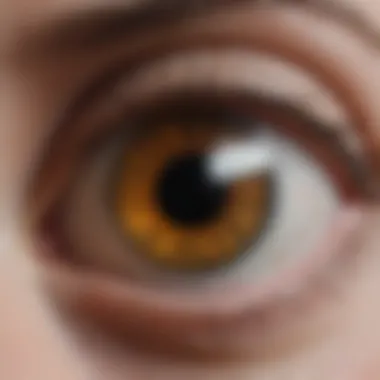
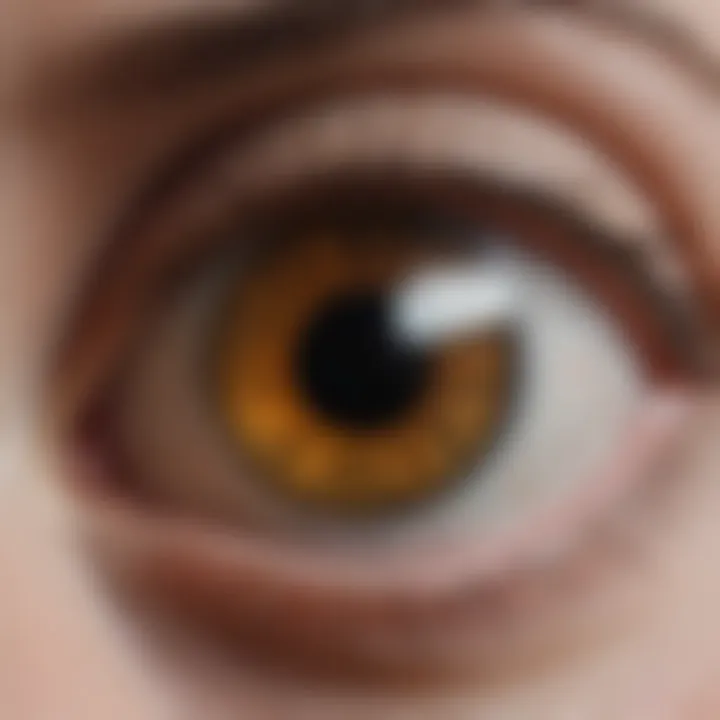
As individuals age, physiological changes occur within the eye that typically result in variations in IOP. Studies indicate that the trabecular meshwork, which plays a key role in draining aqueous humor, becomes less efficient with time. This decline can lead to increased IOP if not countered by other mechanisms. It's also observed that younger adults may experience transient spikes in IOP due to physical activity or internal factors, while older adults may have more stable but elevated pressure levels.
Some age-related conditions that may further complicate IOP regulation include cataracts and retinal degeneration. Understanding these age-related changes can assist clinicians in monitoring and managing pressure in elderly patients more effectively.
Systemic Conditions Impacting IOP
Various systemic health conditions can influence IOP, highlighting the interconnectedness of overall health and ocular pressure. For instance, systemic hypertension is correlated with higher IOP. Patients with diabetes mellitus may also show fluctuations in IOP due to changes in fluid dynamics and metabolic factors.
Additionally, certain medications used for systemic diseases, such as corticosteroids, have been implicated in causing elevated IOP as a side effect. Recognizing these interactions between systemic health and IOP is critical for tailored treatment approaches and effective glaucoma management.
Lifestyle Factors
Lifestyles choices play a pivotal role in influencing IOP levels. Factors such as diet, exercise, and stress levels can have an impact. Regular physical exercise is generally seen as beneficial; moderate activities can promote healthy aqueous humor circulation and drainage.
Conversely, excessive consumption of caffeine and high-sodium diets may lead to increased IOP. Furthermore, smoking and substance abuse can introduce additional risks.
Here are some key lifestyle considerations that can influence IOP:
- Dietary choices: Low in sodium and high in antioxidants.
- Physical activity: Regular aerobic exercise.
- Stress management: Techniques such as yoga or mindfulness.
Maintaining a balanced lifestyle may contribute positively to intraocular pressure control and overall eye health.
Current Research Trends in IOP Management
Understanding the current research trends in intraocular pressure (IOP) management is crucial for improving patient outcomes and advancing ocular health. As we recognize the significance of maintaining normal IOP levels, research efforts focus on innovative methodologies that offer better management strategies for ocular conditions, particularly glaucoma. Addressing these challenges requires ongoing exploration of pharmacological, surgical, and technological advancements.
Pharmacological Approaches
Pharmacological interventions represent a primary strategy in managing IOP. Currently, there exists a range of medications that lower IOP, impacting ocular health in tangible ways. These treatments include:
- Prostaglandin analogs (e.g., Latanoprost and Bimatoprost): These increase the outflow of aqueous humor, effectively reducing intraocular pressure.
- Beta-blockers (such as Timolol): They decrease aqueous humor production, thus leading to lower IOP.
- Alpha agonists (like Brimonidine): These also reduce aqueous humor production and enhance outflow.
The development of fixed-dose combinations is another key area of research. By combining two or more medications into a single formulation, adherence improves and thus overall treatment efficacy enhances. This area also focuses on identifying new targets for drugs within the trabecular meshwork and the uveoscleral pathways.
Surgical Interventions
Surgical interventions are essential when pharmacological management fails to maintain adequate IOP levels. The landscape of surgical research is dynamic, exploring various techniques and technologies. Key approaches include:
- Trabeculectomy: This creates a new drainage pathway for aqueous humor, lowering IOP effectively.
- Glaucoma drainage devices: These are implanted to facilitate aqueous outflow.
- Minimally invasive glaucoma surgery (MIGS): MIGS techniques, such as the iStent and Hydrus Microstent, are designed to lower IOP with fewer complications and faster recovery times.
The focus of current research is not just on efficacy but also on patient safety and the minimization of complications associated with surgical procedures. Enhanced surgical techniques and device innovations contribute significantly to managing IOP over a long-term period.
Innovative Technologies in Monitoring IOP
The advancement of technology plays a pivotal role in accurately monitoring IOP. Key trends in this area include:
- Continuous IOP monitoring devices: Wearable devices allow for real-time tracking of IOP, providing valuable data to manage fluctuations effectively.
- Smartphone-based tonometry: Research has also delved into the feasibility of using smartphones to facilitate home-based IOP measurements, which could improve regular monitoring.
- Telemedicine applications: With the growing acceptance of telehealth, remote consultations are becoming common. This methodology allows patients to record and share their IOP data with healthcare providers, ensuring timely interventions.
"The integration of technology into IOP management is transforming how we diagnose and treat glaucoma, leading to more personalized patient care."
Ending and Future Directions
The discussion of normal intraocular pressure (IOP) is vital to comprehend the broader implications of ocular health. This article provides an in-depth examination of IOP, its regulation, and its significance in various eye conditions, especially glaucoma. Recognizing the importance of maintaining normal levels of IOP can lead to better preventative strategies and interventions for preserving eyesight.
Current knowledge emphasizes the necessity for ongoing research to refine our understanding of IOP dynamics. Improved measurement techniques could enhance the accuracy of IOP readings. Technological innovations may also lead to earlier detection of abnormal IOP levels, subsequently decreasing the risk of glaucomatous damage.
Summarizing the Significance of IOP
Maintaining normal IOP is crucial, as it directly affects ocular structure and function. Elevated or low IOP can lead to significant health challenges, including glaucoma, which remains one of the leading causes of blindness worldwide.
- Normal range: Recognizing what constitutes normal IOP is foundational for eye care. Average levels typically range between 10 and 21 mmHg. Deviations from this range necessitate thorough investigation and potential intervention.
- Monitoring: Regular IOP checks are vital for high-risk groups, including individuals with a family history of glaucoma or those with certain systemic conditions.
"The significance of regular eye examinations cannot be overstated; they are critical for preventive care."
Emerging Areas for Future Research
Future research endeavors should focus on several promising areas that could enhance the understanding of IOP and its applications in clinical practice. Some key areas include:
- Genetic factors: Investigating the genetic predisposition to abnormal IOP might uncover valuable insights into preventive strategies. Understanding how genetics influence aqueous humor dynamics could lead to targeted therapies.
- Lifestyle influences: Examining how lifestyle factors, such as diet and physical activity, impact IOP can inform management practices and patient education.
- Advanced monitoring technology: Developing real-time monitoring devices could transform the management of IOP. Continuous IOP monitoring at home would allow patients and professionals to respond swiftly to changes.
In summary, the field of intraocular pressure is ripe for exploration. With ongoing research, there is substantial potential to enhance eye care outcomes and deepen our understanding of ocular health. This groundwork can lead to innovative approaches in preventing and managing conditions related to abnormal IOP, ultimately improving the quality of life for patients.



